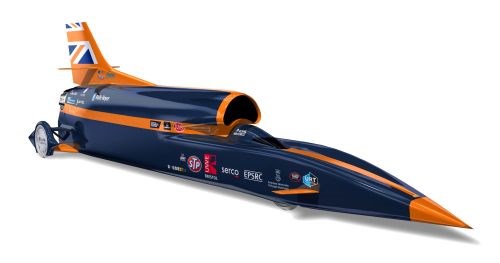Landspeed Record with Laser Melting
The very first object to break the landspeed barrier of 1,000 mph is likely to be a part produced through additive manufacturing.

The very first object to break the landspeed barrier of 1,000 mph is likely to be a part produced through additive manufacturing. The Bloodhound supersonic car, which will attempt to surpass this speed in 2015, will use a titanium nose tip created through additive manufacturing using a Renishaw laser melting machine.
The seemingly simple part is not simple at all. Indeed, CNC machining would have been impractical for making the nose tip, because the part is hollow. Additive manufacturing gave the Bloodhound engineers the freedom to tailor the nose tip design on both the outside and the inside, creating a structure that provides precisely the needed strength with the minimum possible weight.

Related Content
-
8 Cool Parts From Formnext 2024: The Cool Parts Show #78
End-use parts found at Formnext this year address various aspects of additive's advance, notably AM winning on cost against established processes.
-
BMW Expands Use of Additive Manufacturing to Foster Production Innovations
The BMW Group is manufacturing many work aids and tools for its own production system using various 3D printing processes, with items such as tailor-made orthoses for employees, teaching and production aids, and large, weight-optimized robot grippers, which are used for such things as carbon fiber-reinforced polymer roofs and entire floor assemblies.
-
Video: AM for Harder, Longer-Lasting Brake Discs
Additive manufacturing is being applied to limit automotive brake dust. For a major automaker, Etxetar and Talens are developing a production-speed directed energy deposition system to give brake discs a precise layer of wear-resistant carbide.











